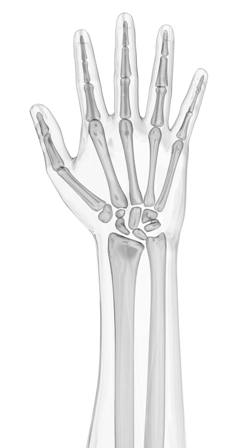Orthopedic Coding Alert
Fine Tune Your Decompression, Fusion Procedures With These Tips
If you always turn to 62, 80, or 81, our experts’ answer might surprise you.
You can save time unraveling a case involving multiple surgeons by verifying each physician’s role and treating each surgeon’s work as a separate activity. Try your hand at the following scenario to see if your coding lines up with our experts’ advice once you consider the nuances between reporting a case as co-surgery, assistant surgery — or something else.
The case: Medical necessity shows that a patient needs both lumbar spinal decompression and fusion, so two surgeons from your group agree to handle the case together. Dr. A performs the decompression; Dr. B (who specializes in fusion procedures) completes the spinal fusion with instrumentation. The physicians were not in the operating room (OR) at the same time, but a physician assistant was present and assisted during both portions of the case.
Separate Each Surgeon’s Work
The correct way to approach your coding is to treat each physician’s portion as a separate procedure. Here’s how to start:
Remember What Modifiers Represent
Now that you’ve determined each surgeon’s procedure, consider how they worked together during the case and assign the appropriate modifiers.
Don’t Fall Prey to Modifier 51
The example case includes multiple procedures during the same operative session (the lumbar spinal decompression and the spinal fusion with instrumentation), but that doesn’t mean you add modifier 51 (Multiple procedures) to the surgeons’ claims.
Here’s why: Reporting modifier 51 would incorrectly represent that the surgeon was present performing multiple procedures. If a surgeon is not physically present for multiple procedures in a surgical case, it’s not appropriate to indicate by use of a modifier that he was.
Serial Surgery Could Be Your Answer
The scenario isn’t co-surgery because Physician A didn’t perform an approach for Physician B, or vice versa; the physicians simply performed surgery on the patient on the same day, back to back. The case is what Cobuzzi calls serial surgery.
“One surgery is done and then another is done immediately after,” Cobuzzi explains. “The patient is spared two operative sessions with two openings and closings. The payer is spared paying for a second operative session, facility fees, second anesthesia, etc.”
Avoid 52 error: Physician A opened the patient and Physician B closed the patient, but each surgeon still completed an entire procedure. Therefore, you can code and bill for each physician’s full surgery without reducing reimbursement with modifier 52 (Reduced services). “The savings for the patient and payer are considered acceptable and therefore it is acceptable to bill the full procedures for each of the serial surgeons,” Cobuzzi explains.
There’s no modifier for serial surgery. “You treat the procedures like different operative sessions, one by Physician A and the other by Physician B,” Cobuzzi says.
Bottom-line coding: Here’s how you would report the above case:
Related Articles
Orthopedic Coding Alert
- Wrist:
4 Steps Help You Weather These Complex Wrist Repair Coding Errors
Learn to differentiate tendon codes from nerve codes by studying your anatomy. Hand and wrist [...] - Modifiers:
Fine Tune Your Decompression, Fusion Procedures With These Tips
If you always turn to 62, 80, or 81, our experts’ answer might surprise you. [...] - ICD-10:
Examine How ICD-10 Shakes Up Your Shoulder Lesion Diagnoses in 2015
Find out how 726.xx expands into numerous options with different lingo. Shoulder lesions mean that [...] - ASCs:
3 Tips Analyze Your ASC Coding Rules
Here’s how to properly use modifier SG. Suppose you bill Medicare when your surgeon treats [...] - Reader Question:
Can You Bill Digital Block Bundles With Toenail Excision? Find Out
Question: Our foot surgeon performed a toenail excision and nail bed repair with a digital block. [...] - Reader Question:
Cross Modifier 50 Out for Trigger Point Injections
Question: How should I report bilateral trigger point injections in three locations for a Medicare patient? [...] - You Be the Coder:
Discover How to Report Open Capsular Shift
Question: Our surgeon performed an anterior reconstruction of the shoulder with a capsular shift as an [...]




